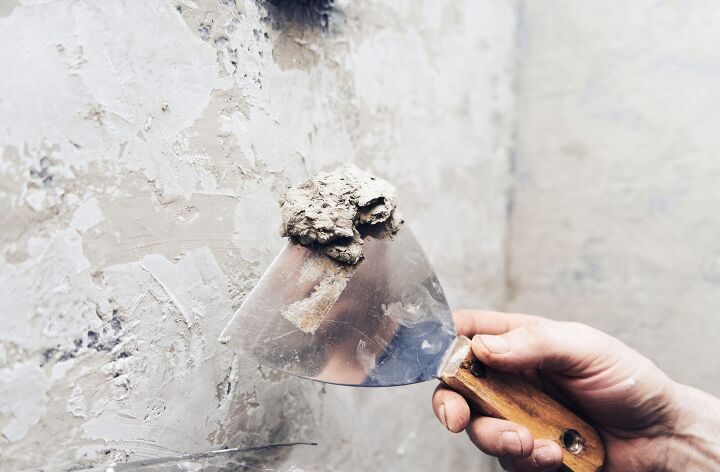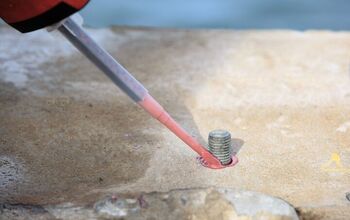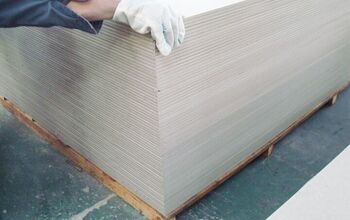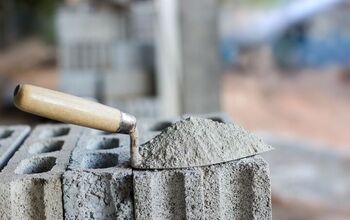Surface Bonding Cement Vs. Stucco: What's The Difference?

Planning on restoring the exterior of your home? When it comes to choosing the right finish material, you may find yourself stuck between several options. Of course, the goal is to improve both the appearance and durability of your walls. Whether you have cinder block, concrete, stone, or brick walls, there are a number of different ways that you can approach the project.
The preferred method varies from homeowner to homeowner and professional to professional, although many find themselves wondering whether traditional surface bonding cement or stucco is the better choice. The chief difference between the two has to do with their formulas. Surface bonding cement contains fiberglass and special acrylic additives that add strength and durability to the surface it is applied to.
However, this is not to say that stucco may not be a viable choice for your project. Continue reading for our guide on surface bonding cement vs. stucco, so you can make an informed decision about which approach is best.
Do You Need Stucco Installation or Replacement?
Get free, zero-commitment quotes from pro contractors near you.

What is Surface Bonding Cement?
Surface bonding cement is essentially Portland cement that has been fiber-reinforced to be used as a base coating on concrete and masonry walls. Though, it can also be used to construct block walls without mortar joints, and damp-proof and decorate existing walls. Surface bonding cement adds durability, strength, and water resistance to walls that are made of concrete, brick, concrete or cinder block, stone, and even terra cotta tile.
The material is ideal for restoring and/or adding beauty to structures, chimneys, and walls. It’s incredibly effective at repairing the walls of older buildings that have cracked and loosened over time. Not to mention, a quick 1/8” coating of surface bonding cement on exterior walls will make them virtually impervious to cold air drafts. As such, the product is particularly appropriate for renovating horse barns and other types of farm buildings.
Though traditionally used to strengthen existing masonry walls or create mortarless block walls, surface bonding cement can also be used as a masonry parge, or scratch, brown, or finish coat for stucco.
What is Stucco?
Stucco is a decorative coating used for walls, ceilings, and other surfaces to give it a particular finish and texture. It can be used both indoors and on the exterior of a building to provide an additional design element. However, the stucco that is used for exterior applications is not the same as the kind used for interiors. Stucco that is applied on the exterior of a home or building is designed to withstand the elements, including direct sunlight and inclement weather.
The material itself is cement-based, made of a combination of cement, sand, water, and lime. It is available in a wide array of textures and colors, but comes in two distinct stucco systems: the 3-coat system and the 1-coat system.
Three Coat vs. One Coat Stucco
The three coat system is the original stucco process, which consists of water and paper, a scratch coat, brown coat, and a top coat. In industry terms it is just latch, scratch, and brown. The top coat itself is not considered a step since it is required on every type of application used.
Since three-coat stucco is twice as thick as one coat, it offers more strength, durability, and is able to hold up better to wear and tear. However, it can take weeks for each step to be properly applied and cure. Because of the extra materials and labor required, three-coat stucco is much more expensive than one coat.
The term “one coat” stucco describes a blend of Portland cement, fibers, sand, water, and special proprietary chemicals. Using this method expedites the three coat process by combining the scratch and brown coat into one application that is between 3/8” and ½” thick. The one coat system is gaining popularity in recent years because of its affordable cost and quicker application process. Take a look at the 13 types of stucco walls.
The Lath
In the three coat process, the latch that is used consists of asphalt infused paper, metal wire, and other accessories like weep screed, plaster stop, and corner aid. First, the weep screed and plaster stop are applied where needed to prevent moisture absorption. This is followed by the paper, installed from bottom up, to protect wood underlayment.
After the paper is installed, the wire is placed. This wire is a 17 gauge chicken wire type of netting that is furred, allowing for the cement to “mushroom” behind it. After the wire is installed, the corner and arch aid is added where necessary.
The Scratch Coat
The scratch coat refers to the base coat, and the first coat that will go on the wall. It is applied using a hawk and trowel and scratcher, spread evenly to achieve a depth of 3/8 of an inch thick. After the cement is on the wall, the scratcher is used to create horizontal lines in the stucco. This helps the brown coat stick to it.
The Brown Coat
This coat is applied after the scratch coat, using the same techniques. However, instead of a scratcher a tool called a “darby” is used. A darby is essentially a three-foot-long trowel that has two handles and is used to push the cement around to ensure the brown coat it is level and uniform. Like the scratch coat, this coat is approximately 3/8 of an inch thick.
The Finish Coat
The finish or top coat is the final step in the entire process. It is typically applied using a hawk and trowel and can be customized to your liking using a variety of techniques. The two main types of material that is used in stucco finishes is traditional stucco or synthetic (acrylic) stucco.
Surface Bonding Cement vs. Stucco
Cinder block walls are very budget-friendly and practical, but not always the most visually appealing or weatherproof when left unfinished. Covering an exterior cinder block wall helps improve both its durability and aesthetic appeal. There are a number of different ways that you can cover cinder block walls, including surface bonding cement and stucco.
Using surface bonding cement to create a smooth, concrete finish is the easiest way to cover a cinder block wall. The material helps to provide insulation for the building, while also keeping moisture out. It yields a level, finished surface that can be left alone or painted to achieve a desired look. Surface bonding cement features fiberglass and acrylic, which makes it easier for vertical applications.
Stucco, on the other hand, offers a very traditional, straightforward finish that is more decorative than using surface bonding cement. Not to mention, the material works exceptionally well for southwestern-style structures. Since stucco is made from a mixture of cement, silica, and lime, it comes with much of the same benefits as surface bonding cement, or concrete. Like concrete, you can paint stucco your preferred color.
Although surface bonding cement is comparable to stucco, the main difference is the glass fibers and special additives. Surface bonding cement features an acrylic fortifier and fiberglass that adds strength and flexibility to the application. Additionally, surface bonding cement comes in premixed bags that tend to be easier to work with, as the recipe is already calculated and all you have to do is add water! Find out if you can use joint compound on cement board.
Do You Need Stucco Installation or Replacement?
Get free, zero-commitment quotes from pro contractors near you.

Related Questions
How thick should surface bonding cement be applied?
Surface bonding cement should be applied at a minimum thickness of 1/8-inch, and no thicker than ½-inch thick.
How long does it take for surface bonding cement to dry?
Surface bonding cement should be given a minimum of 24 hours to dry. In hot weather, you should lightly dampen the material to promote adequate curing. In cold conditions, cover and prevent the material from freezing for 24 hours.
What are the advantages of stucco siding?
Some of the main advantages to stucco include low maintenance, lasting strength, and a natural resistance to fire. With stucco exteriors, it’s easy and affordable to maintain a constant temperature in your home.

Jessica considers herself a home improvement and design enthusiast. She grew up surrounded by constant home improvement projects and owes most of what she knows to helping her dad renovate her childhood home. Being a Los Angeles resident, Jessica spends a lot of her time looking for her next DIY project and sharing her love for home design.
More by Jessica Stone



























